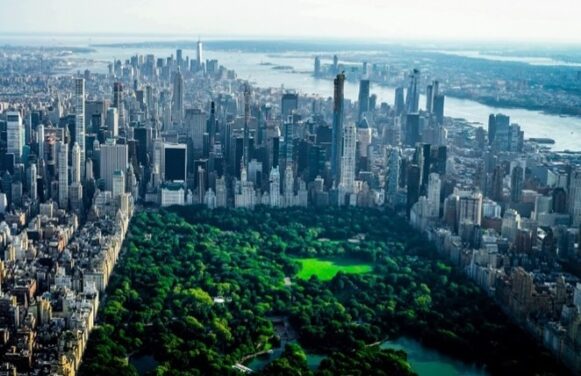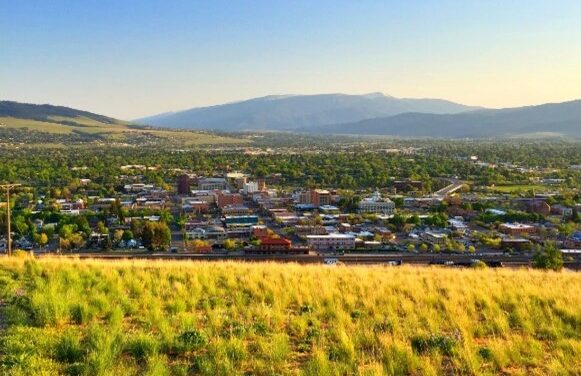Why Nature-Based Solutions are Needed to Increase Social Connection in our Communities – From Guest Blogger Rose Y. Hardy, PhD, MPH

Across the country, we have seen loneliness and social isolation increase, with more than a third of adults over 45 feeling lonely. The COVID-19 pandemic increased that social isolation and loneliness. Both have been associated with worse health outcomes, including premature death and greater rates of mental health conditions. For children and young adults, suicide is the second leading cause of death. Because of increases in youth suicide rates and mental health concerns, the American Academy of Pediatrics, American Academy of Child and Adolescent Psychiatry, and Children’s Hospital Association came together in 2021 to declare a national state of emergency in children’s mental health.
To alleviate these societal ills, we should think about communities, buildings, and protected natural spaces as part of the solution. Social determinants of health (SDOH) or the conditions impacting where people live, learn, work, play, and worship affect health and quality of life. As a result, considering the design and way communities function is critical to addressing health and wellbeing. Understanding how we build social connectedness in our communities to decrease isolation and loneliness is important to our future thriving. Social connectedness doesn’t necessarily mean being connected to many people but rather, feeling supported and accepted by people and organizations whose support and acceptance you seek.
One of the ways that we can address social connectedness, loneliness, and social isolation is through engaging with others in natural spaces. Have you taken a break from work to go for a walk in a park and catch up with a friend? Planted something and found joy in watching it grow? If so, you’ve engaged in a nature-based solution. These activities can increase social interactions, decrease stress, and increase physical activity thereby impacting health and wellbeing. Nature-based solutions may be an unfamiliar term, but they’re simply incorporating natural spaces and nature-based activities into the way we solve a problem. Cities that build energy efficient buildings or add trees and parks to keep areas from overheating and promote social cohesion are implementing nature-based solutions.
Our communities are going through major changes because of climate change, economic inequalities, and loneliness. Multisector collaboration and nature-based solutions can address these major changes in new and innovative ways. Increases in social isolation and loneliness have brought greater recognition that more needs to be done to address them and improve health and wellbeing. One of the ways that the health care field is addressing social connection is the use of nature-based social prescribing. What is nature-based social prescribing? Well, like a doctor giving you a prescription for a medication, they could give you a prescription to take a walk with a friend along the Scioto River or visit the botanical gardens. While less common in the US, it has become more integrated into care in other countries, like England. Other researchers are assessing how nature-based social prescribing is being carried out across the world.


It’s easy to say, well just get outdoors but particularly in cities, finding those spaces can be more challenging especially for those without transportation. As a result, cities need to be thoughtful in the creation of safe and natural spaces for people to come together. As a health services researcher that thinks about health equity, I care that we implement these nature-based solutions in ethical and respectful ways that consider the communities we will impact. When we consider our history, it’s important to try not to repeat our past mistakes. For example, New York City, a city which from the start displaced the Lenape living there, went through rapid growth in the mid-1800s. The concerns over the effects of this rapid urbanization led to a nature-based solution: the development of Central Park. As beautiful and lovely as it is, this was not unoccupied land. Seneca Village was a thriving Black land-owning community and the people living there were displaced by powerful New Yorkers in order for Central Park to be developed. Ensuring that the nature-based solutions that we implement now are equitable, accessible, and respectful of affected communities is critical to these solutions being effective, let alone acceptable. Ensuring that all voices are included in the creation of the infrastructure for these nature-based solutions and nature-based social prescribing activities is needed to have the intended impact.
Having grown up in Montana, I’ve had the privilege of easily accessing the outdoors and experiencing the joys that those spaces can bring. Now living in Columbus, I appreciate the ways that those spaces I often took for granted can be used to improve health and impact some of the challenges that urban communities face. The Coalition to End Social Isolation and Loneliness recently presented its 2023-2024 policy priorities. Within their policy priorities for built environments, they outline addressing transportation insecurity, enhancing housing services and supports, and enhancing public spaces like libraries, community art spaces, and green spaces. Columbus has, knowingly or unknowingly, started addressing some of these. However, I would challenge us, especially urban designers and architects, to think even more thoughtfully about how we can ethically implement nature-based solutions to address these priorities and make Columbus a place where everyone can take advantage of community engagement and green spaces.
WRITTEN BY ROSE Y. HARDY, PhD, MPH – DATA SCIENTIST – CENTER FOR CHILD HEALTH EQUITY OUTCOMES RESEARCH


